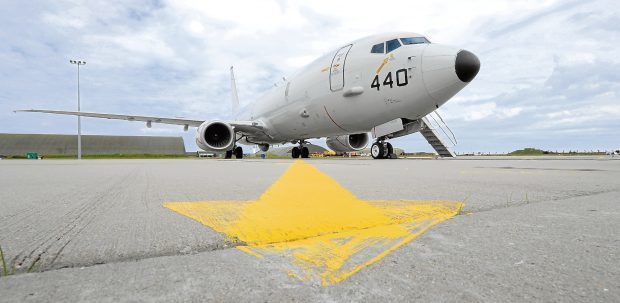RAF Lossiemouth is to house P-8 Poseidon aircraft come 2020 as part of the new Defence Arctic Strategy.
The announcement was made by Defence Secretary Gavin Williamson on Sunday as part of the new Defence Arctic Strategy, acknowledging the increasing opportunities and threats the region presents.
Based out of RAF Lossiemouth, the P-8 Poseidon sub-hunters will help combat a range of intensifying threats, not least increasing submarine activity in the Arctic.
This increased submarine activity poses a new threat and is something the Royal Navy is ready to combat. In 2018, a Royal Navy submarine took part in ICEX with the US Navy for the first time in ten years and as part of the new Defence Arctic Strategy, the Navy will mount regular under-ice deployments in the years to come.
Commenting on the new strategy, Defence Secretary Gavin Williamson said: “As the ice melts and new shipping routes emerge, the significance of the High North and Arctic region increases.
“Russia, with more submarines operating under the ice and ambitions to build over 100 facilities in the Arctic, are staking a claim and militarising the region. We must be ready to deal with all threats as they emerge.”
The change in the natural environment in the Arctic and High North is driving a change in the security environment and, as the region becomes more accessible, there has been an increase in military activity. The new Defence Arctic Strategy will put the Arctic, north and north-east central to the security of the United Kingdom.
Currently, the Royal Marines conduct cold weather training in Norway on an annual basis, with around 800 due to deploy in 2019. As part of the new Arctic strategy, the Marines training will become joint with Norway on a long-term basis and integrated into Norway’s defence plan, providing UK troops a unique opportunity to train alongside a key ally.
The strategy will also complement our NATO commitments and in 2019, four RAF Typhoons will for the first time patrol Icelandic skies. This will allow the UK to work closely with allies to deter aerial threats to Euro Atlantic security. The mission will also provide the RAF with unique opportunities to test its skills in different environments.
